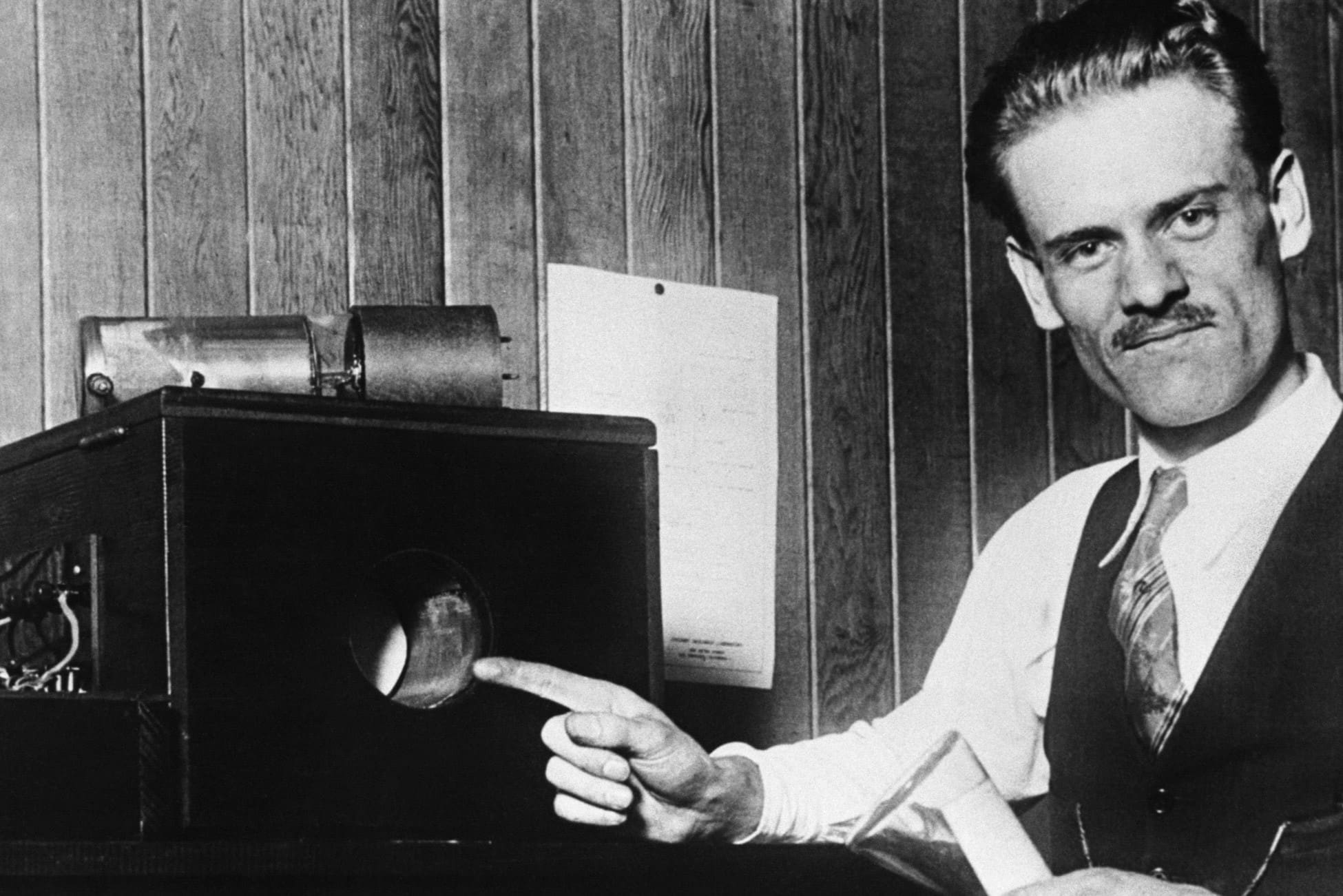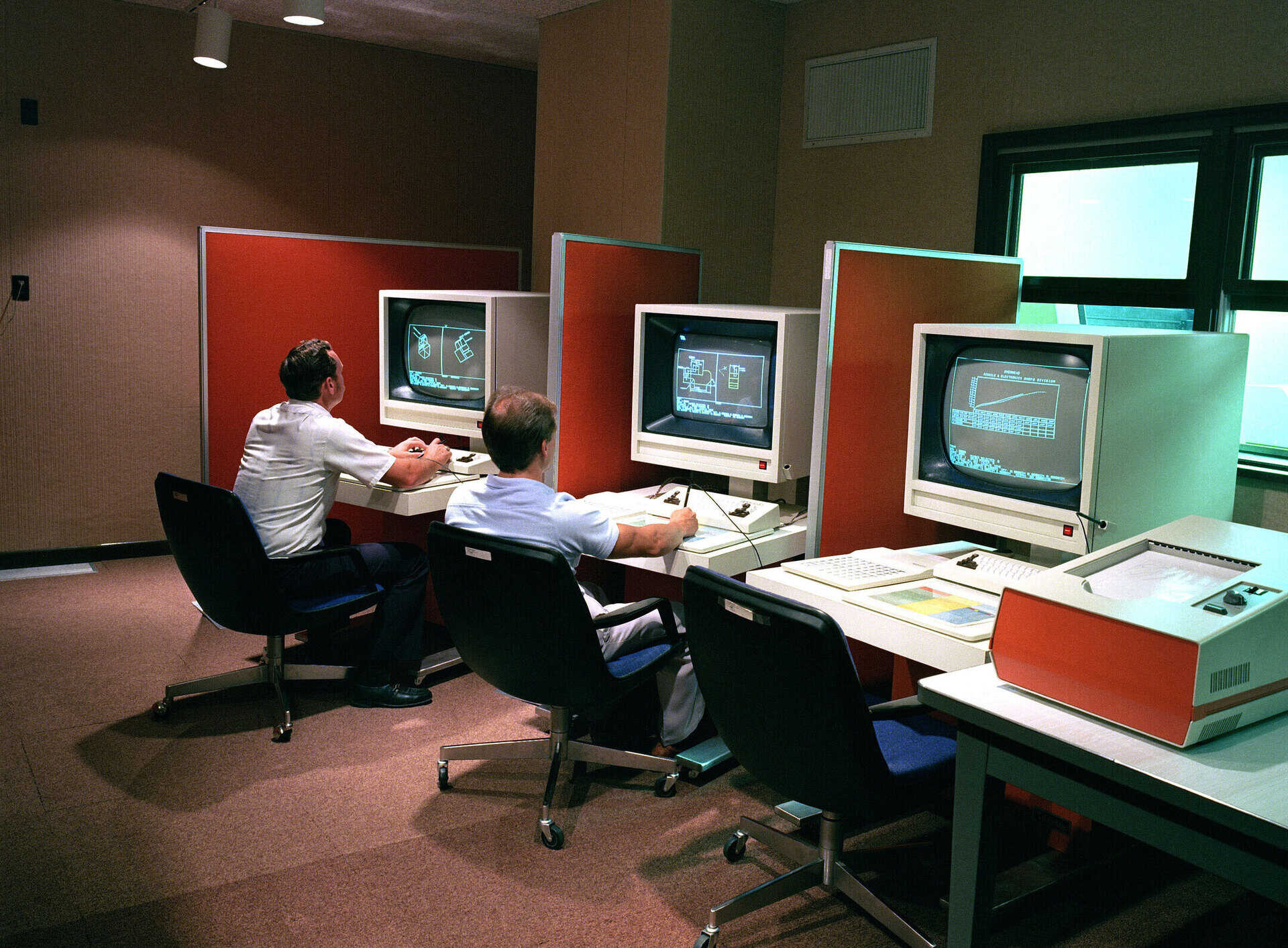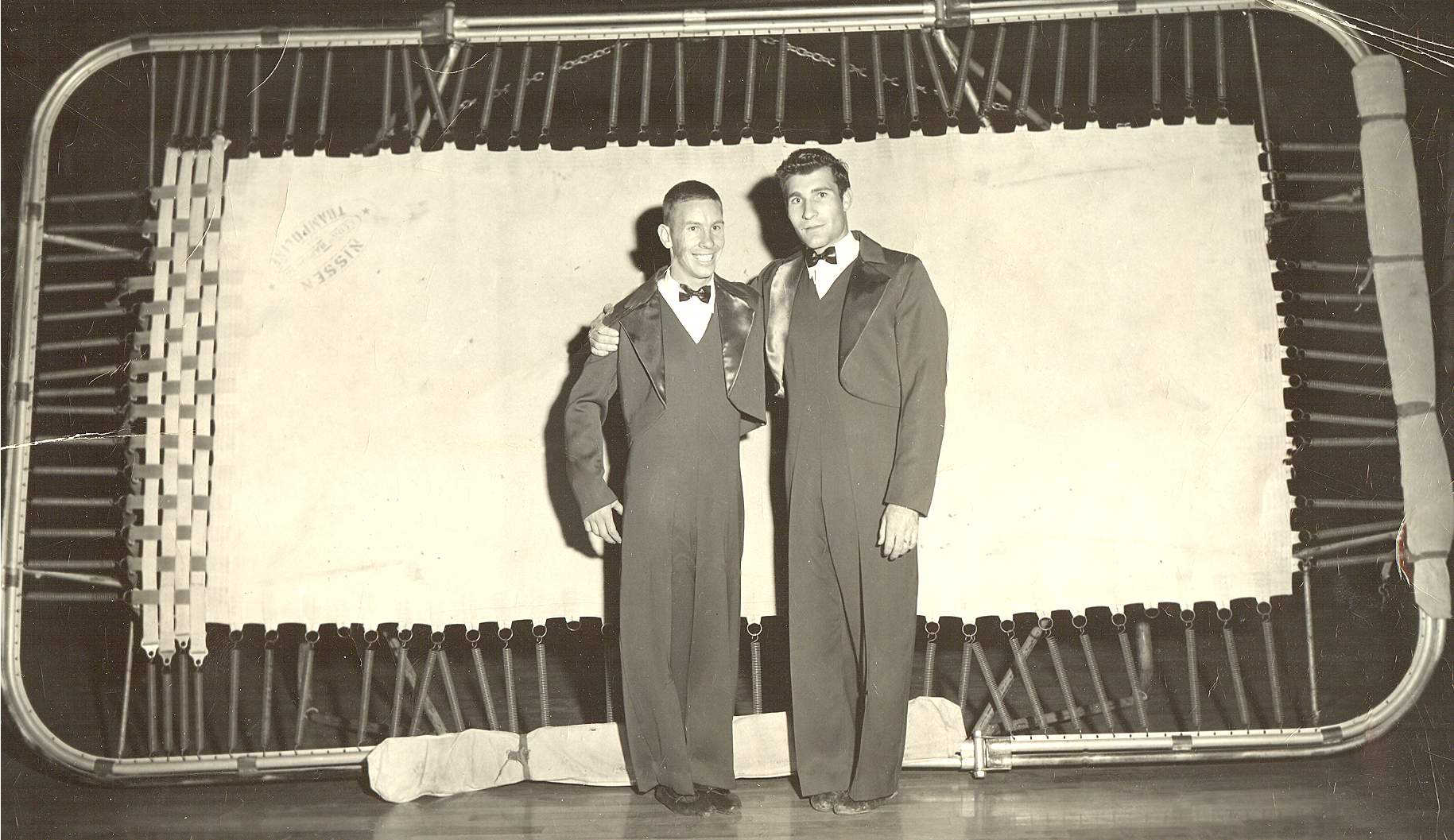Home>Technology>Home Entertainment Systems>Who Invented Radio And Television


Home Entertainment Systems
Who Invented Radio And Television
Modified: January 9, 2024
Discover the history of radio and television and learn about the inventors behind these revolutionary home entertainment systems.
(Many of the links in this article redirect to a specific reviewed product. Your purchase of these products through affiliate links helps to generate commission for Storables.com, at no extra cost. Learn more)
Introduction
The invention of radio and television revolutionized the way we communicate and entertain ourselves. These technologies have become an integral part of our daily lives, providing us with access to news, music, entertainment, and much more. But have you ever wondered who were the brilliant minds behind these inventions? In this article, we will delve into the early development of radio and television and explore the contributions of some of the key inventors who shaped these technologies as we know them today.
Key Takeaways:
- The development of radio and television was shaped by brilliant inventors like Nikola Tesla, Guglielmo Marconi, Philo Farnsworth, and John Logie Baird, whose contributions revolutionized communication and entertainment.
- The evolution of radio and television was a collective effort involving visionaries like James Clerk Maxwell, Heinrich Hertz, Sir Oliver Lodge, Reginald Fessenden, E.C. Wente, and Edwin Armstrong, whose innovations laid the foundation for the modern home entertainment systems we enjoy today.
Read more: Who Invented The Plasma Television?
Early Development of Radio
The development of radio technology can be traced back to the late 19th century. One of the early pioneers in this field was James Clerk Maxwell, a Scottish physicist who laid the foundation for the theory of electromagnetism. Maxwell’s groundbreaking theories provided a conceptual framework for the transmission of electromagnetic waves, which would later play a crucial role in the invention of radio.
Another key figure in the early development of radio was Heinrich Hertz, a German physicist who successfully demonstrated the existence of electromagnetic waves in 1887. Hertz’s experiments confirmed Maxwell’s theories and paved the way for further advancements in the field.
However, it was the groundbreaking work of Nikola Tesla, a Serbian-American inventor, that laid the foundation for modern radio technology. Tesla made significant contributions to the development of alternating current (AC) electrical systems, which became the basis for radio transmission. He also patented numerous inventions related to wireless communication, including the “Tesla coil,” a high-voltage transformer that allowed for the transmission of radio waves.
Despite his contributions, Tesla faced challenges in commercializing and popularizing his inventions. It was Guglielmo Marconi, an Italian inventor and entrepreneur, who is often credited with the invention of radio. Marconi successfully demonstrated the wireless transmission of signals over long distances, leading to the establishment of the first commercial radio telegraphy service.
Marconi’s work was instrumental in popularizing radio technology, and he received the Nobel Prize in Physics in 1909 for his contributions. However, it is important to recognize the contributions of Tesla and other inventors who laid the groundwork for the development of radio technology.
The Contributions of Nikola Tesla
Nikola Tesla was a brilliant inventor who made significant contributions to the development of radio technology. His innovative ideas and inventions have had a lasting impact on various aspects of modern life.
One of Tesla’s most notable contributions was the development of the Tesla coil. This high-voltage transformer allowed for the transmission of radio waves, making wireless communication possible. Tesla’s coil design formed the basis for the radio transmitters that would later be used in broadcasting stations around the world.
Tesla also envisioned a global wireless communication system that would transmit messages, images, and even power wirelessly. He developed the concept of the “World System,” which involved the use of a network of towers and interconnected transmitters and receivers. While Tesla was unable to fully realize his vision due to financial constraints, his ideas and technologies laid the groundwork for the future development of wireless communication systems.
In addition to his work on radio technology, Tesla also made significant advancements in alternating current (AC) electrical systems. His inventions and patents related to AC power transmission revolutionized the field of electricity and paved the way for the widespread adoption of electricity in homes and industries.
Tesla’s contributions to radio and electrical engineering were groundbreaking, but unfortunately, he faced financial difficulties and was not able to fully exploit the commercial potential of his inventions. Despite this, his ideas and inventions laid the foundation for the development of modern radio and television technologies.
Today, Tesla is recognized as one of the greatest inventors of all time. His genius and forward-thinking have had a profound impact on the world, and his contributions continue to shape the way we communicate and harness energy.
The Role of Guglielmo Marconi
While Nikola Tesla made significant contributions to the development of radio technology, it was Guglielmo Marconi who is often credited with the invention of radio. Marconi’s work was instrumental in popularizing and commercializing radio communication.
Marconi was an Italian inventor and entrepreneur who successfully demonstrated the wireless transmission of signals over long distances. In 1895, he set up a radio telegraphy station at his family estate in Italy and achieved the transmission of signals over a distance of 1.5 miles. This was a groundbreaking achievement at the time, as it proved the feasibility of wireless communication.
In the following years, Marconi continued to refine and improve his wireless telegraphy system. He made significant advancements in transmitting signals over increasingly longer distances, using various techniques such as the development of more powerful transmitters and the use of taller transmitting antennas. These advancements culminated in the historic achievement of the first transatlantic wireless communication in 1901, where Marconi successfully transmitted a wireless signal from Cornwall, England to St. John’s, Newfoundland.
Marconi’s success in commercializing radio communication led to the establishment of the first commercial radio telegraphy service, which played a crucial role in maritime communication. His wireless telegraphy system provided ships with a reliable means of communication, greatly improving safety at sea.
In recognition of his accomplishments, Marconi was awarded the Nobel Prize in Physics in 1909, becoming the youngest Nobel laureate at the time. His contributions to the field of radio communication cannot be overstated, as he paved the way for the development of radio broadcasting and laid the foundation for the modern telecommunications industry.
Despite the controversy surrounding the patent disputes between Marconi and Tesla, both inventors made significant contributions to the development of radio technology and played vital roles in its history. Marconi’s entrepreneurial spirit and technical innovations were instrumental in bringing radio communication to the masses, making him a key figure in the evolution of this revolutionary technology.
Other Inventors and Contributors to the Development of Radio
While Nikola Tesla and Guglielmo Marconi are often recognized as the key figures in the development of radio technology, there were several other inventors and contributors who played significant roles in its evolution.
One notable figure is Sir Oliver Lodge, a British physicist and inventor. Lodge developed a device called the “coherer,” which was crucial in the early detection of radio signals. The coherer was a primitive form of a radio wave detector, capable of converting radio waves into electric currents. Lodge’s coherer became a fundamental component of early radio receivers and contributed greatly to the advancement of radio technology.
Another important contribution came from Reginald Fessenden, a Canadian inventor and engineer. Fessenden made significant advancements in radio transmission, particularly in the area of voice and music transmission. In 1906, he achieved the first wireless transmission of human voice, which marked a significant milestone in the development of radio broadcasting.
E.C. Wente, an American engineer, made significant contributions to the improvement of audio quality in radio broadcasting. He developed the “Western Electric condenser microphone,” which greatly enhanced the sound reproduction capabilities of radio receivers. Wente’s microphone technology played a crucial role in improving the overall audio quality of radio broadcasts.
Additionally, Edwin Armstrong, an American inventor, made significant contributions to the field of radio technology. Armstrong invented the superheterodyne receiver, a more efficient and selective method of receiving radio signals. This invention revolutionized the field of radio communication and became the standard technology used in radio receivers for many years.
These inventors and contributors, among others, played vital roles in advancing the development of radio technology. Their innovations and discoveries collectively shaped the evolution of radio, enabling its widespread adoption and paving the way for the modern communications landscape.
Guglielmo Marconi is credited with inventing the radio, while Philo Farnsworth is credited with inventing the television. Both of these inventions have had a significant impact on communication and entertainment.
Read more: Who Invented The Color Television
The Invention of Television
Television, an innovation that revolutionized the way we receive and consume visual media, has a fascinating history of invention and development. While there were several inventors and contributors involved, two individuals, Philo Farnsworth and John Logie Baird, are widely recognized for their groundbreaking work in the invention of television.
Philo Farnsworth, an American inventor, is often credited with inventing the first fully functional electronic television system. In the 1920s, Farnsworth conceived the idea of using an electronic scanning system to capture and transmit images. He successfully demonstrated his invention in 1927, transmitting the first television image of a simple straight line.
Farnsworth’s invention utilized a combination of a cathode-ray tube and an electronic camera to capture and display images. His system involved a beam of electrons scanning back and forth across the screen, illuminating tiny dots known as pixels to create a complete image. Farnsworth’s invention laid the foundation for the development of modern electronic television systems.
Meanwhile, in the United Kingdom, John Logie Baird was also making significant strides in the invention of television. Baird is often credited with creating the first working mechanical television system. In 1925, he successfully transmitted the first recognizable television image, known as the “Baird Televisor.” This mechanical system used a rotating disk with a series of small holes to capture and transmit images.
Baird continued to refine his television system, showcasing live television broadcasts and achieving notable milestones, including the transmission of the first long-distance television signal between London and New York in 1928. While his mechanical television system had limitations, it played a crucial role in the early development of television technology.
Over time, the invention of television evolved as inventors and engineers made significant advancements in technology. The development of cathode-ray tubes, electronic scanning systems, and the introduction of color television were just a few of the innovations that transformed television into the medium we know today.
It is important to note that the invention of television was a collective effort involving numerous inventors and contributors from various countries. The works of Farnsworth and Baird, along with the contributions of others, laid the foundation for the modern television systems we enjoy today.
The Role of Philo Farnsworth
Philo Farnsworth, an American inventor, played a pivotal role in the development of television. He is widely recognized for creating the first fully functional electronic television system, which formed the basis for modern television technology.
Farnsworth’s journey in television began in the early 1920s when he conceived the idea of using electronic scanning to capture and transmit images. He believed that an electronic system, as opposed to the mechanical systems of the time, could provide a more efficient and high-quality method of television transmission.
After years of experimentation and refinement, Farnsworth successfully demonstrated his electronic television system in 1927. He transmitted the first television image, a simple straight line, using a combination of a cathode-ray tube and an electronic camera. Farnsworth’s system involved a beam of electrons scanning back and forth across the screen, illuminating tiny dots known as pixels and creating a complete image.
Farnsworth’s invention was significant because it eliminated many of the limitations of mechanical television systems, such as flickering images and low resolution. His electronic system provided a clearer and more stable image reproduction, which laid the foundation for the future development of high-definition television.
In addition to his groundbreaking work on electronic television, Farnsworth also made advancements in other related technologies. He patented numerous inventions, including the first electronic camera tube known as the “image dissector.” This invention played a crucial role in capturing and converting visual images into electronic signals for television transmission.
Despite facing challenges and legal battles, Farnsworth made significant contributions to the advancement of television technology. His inventions and innovations were key to the development of modern television systems, and his work set the stage for the commercial television industry that followed.
Philo Farnsworth’s legacy as an inventor and his contributions to the field of television continue to shape the way we receive and consume visual media. His electronic television system, along with subsequent advancements in technology, has transformed television into the ubiquitous medium it is today.
The Contributions of John Logie Baird
John Logie Baird, a Scottish inventor, made significant contributions to the development of television technology. He is widely recognized for creating the first working mechanical television system, which paved the way for the future advancements in the field.
Baird’s journey in television began in the 1920s when he started experimenting with different methods of transmitting visual images. He developed a system based on mechanical technology, using a rotating disk with small holes to capture and transmit images. This system became known as the “Baird Televisor.”
In 1925, Baird achieved a significant milestone by successfully transmitting the first recognizable television image. Although the image quality was limited and the system had its drawbacks, it marked the first real step towards the invention of television. Baird’s early experiments included transmitting live images of objects and people, showcasing the immense potential of television as a medium of communication.
Baird continued to refine his mechanical television system, making advancements in image resolution and transmission quality. In 1928, he achieved another breakthrough by successfully transmitting the first long-distance television signal between London and New York. This demonstrated the viability of television as a means of global communication.
Despite the limitations of his mechanical system, Baird’s contributions to the field of television were significant. His achievements pushed the boundaries of what was possible at the time and paved the way for future developments in television technology.
In addition to his work on mechanical television, Baird also made other notable contributions to the field. He invented the first color television system, introducing the concept of color television broadcasting. Although his color system was not as successful as subsequent developments, it laid the foundation for the future advancements in color television technology.
Furthermore, Baird’s experiments in television broadcasting led to the establishment of the first public television service in the world, known as the BBC Television Service. This marked the beginning of regular television broadcasts and played a crucial role in popularizing television as a form of entertainment.
John Logie Baird’s contributions to the development of television were instrumental in shaping the future of visual communication. His early experiments and inventions laid the groundwork for subsequent advancements in television technology, ultimately leading to the high-definition, color, and digital television systems we enjoy today.
Conclusion
The inventions of radio and television have had a profound impact on the way we communicate, entertain, and receive information. Through the efforts of brilliant inventors and contributors, these technologies have evolved from groundbreaking ideas to a crucial part of our daily lives.
In the early development of radio, visionaries like James Clerk Maxwell, Heinrich Hertz, and Nikola Tesla paved the way for the transmission of electromagnetic waves and the birth of wireless communication. While Guglielmo Marconi is often credited with the invention of radio, it is important to recognize the contributions of other inventors like Sir Oliver Lodge and Reginald Fessenden, who played significant roles in advancing the field.
The invention of television was also a result of the work of multiple inventors, with Philo Farnsworth and John Logie Baird standing out as key figures. Farnsworth’s electronic television system revolutionized image transmission, while Baird’s mechanical system demonstrated the feasibility of capturing and transmitting visual images.
Throughout the years, countless inventors and contributors have made their mark on the development of these technologies. Edwin Armstrong’s superheterodyne receiver, E.C. Wente’s condenser microphone, and many others have played vital roles in improving and enhancing the quality of radio and television broadcasting.
The inventions of radio and television have not only transformed the way we entertain ourselves but also revolutionized the way we receive news, connect with the world, and share information. These technologies have become an integral part of our society, bringing people together and providing us with access to a wide range of content and experiences.
As we continue to witness advancements in communication technology, it is important to acknowledge the contributions of these inventors and innovators who paved the way for the incredible devices and experiences we enjoy today. The legacy of these pioneers lives on, reminding us of the power of human creativity and the profound impact it can have on shaping our world.
Frequently Asked Questions about Who Invented Radio And Television
Was this page helpful?
At Storables.com, we guarantee accurate and reliable information. Our content, validated by Expert Board Contributors, is crafted following stringent Editorial Policies. We're committed to providing you with well-researched, expert-backed insights for all your informational needs.















0 thoughts on “Who Invented Radio And Television”